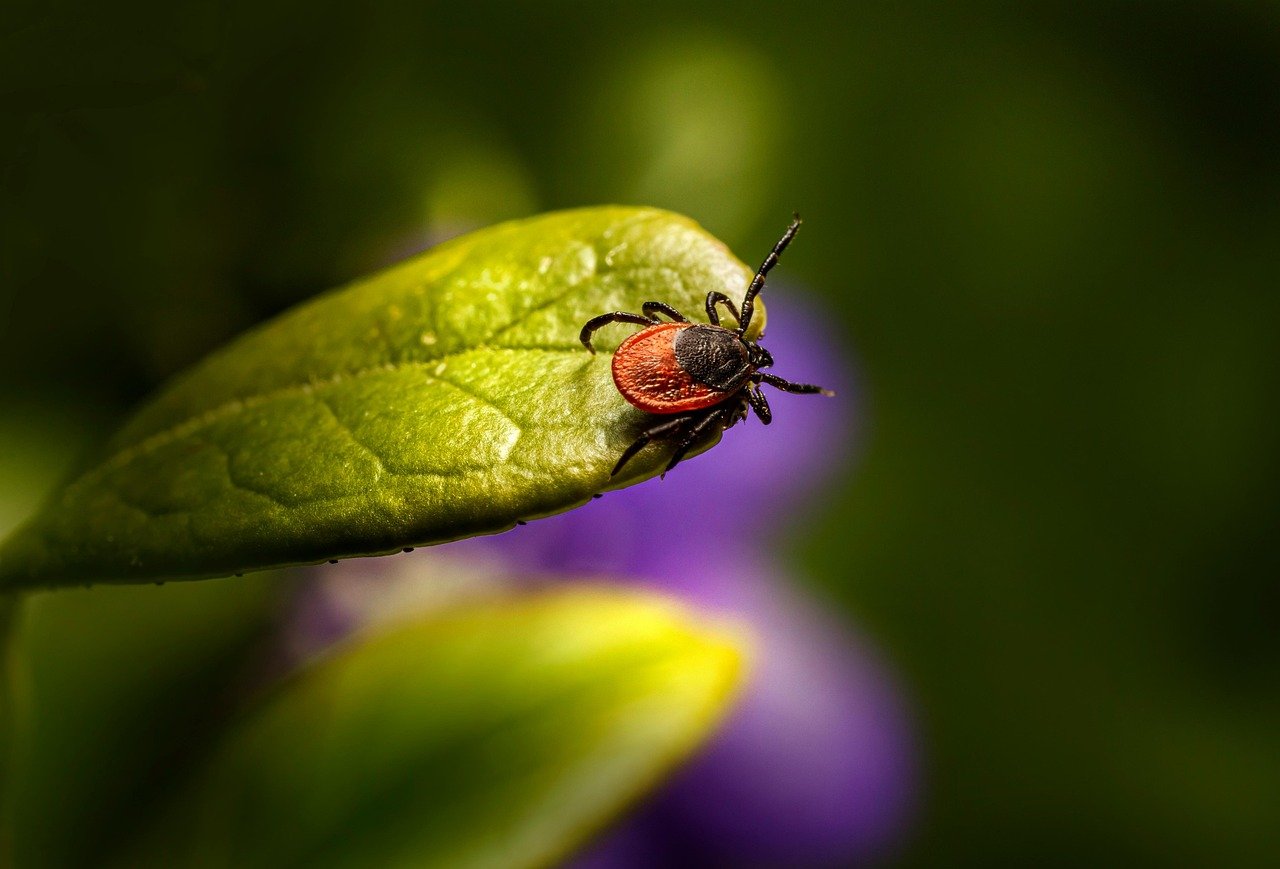Have you ever caught your dog scratching like there’s no tomorrow or caught a glimpse of something wriggling in their fur? The truth is, parasites are sneaky, relentless, and far more common than most dog owners realize. These tiny invaders can turn your pup’s life upside down, causing everything from mild irritation to life-threatening illness. For any dog lover, nothing is more gut-wrenching than seeing your best friend suffer. But here’s the good news: most parasite problems can be prevented with a little knowledge and the right actions. So, let’s uncover the 15 most common parasites that can plague your dog—and more importantly, how you can keep your furry companion safe.
Fleas: The Itchy Invaders
Parasites are more than just an annoyance for dogs—they can pose serious health risks and, in some cases, become life-threatening if left untreated. From external pests like fleas and ticks to internal invaders such as heartworms and intestinal worms, these organisms can cause a wide range of symptoms, from mild irritation to severe disease. Understanding the most common parasites that affect dogs is crucial for every pet owner who wants to ensure their companion leads a healthy, comfortable life.
Fleas are probably the most infamous parasite among dog owners, and for good reason. These tiny bloodsuckers can cause intense itching, hair loss, and even allergic reactions. If you’ve ever seen your dog scratch frantically, fleas might be the culprit. They multiply quickly—just one female flea can lay hundreds of eggs in your home! Fleas can also transmit tapeworms and other diseases. To prevent flea infestations, use monthly flea preventatives, vacuum regularly, and wash your dog’s bedding often. Flea collars, topical treatments, and oral medications are all effective options. Remember, treating your home environment is just as important as treating your dog. If you notice persistent itching, consult your vet right away.
Ticks: Silent Bloodsuckers

Ticks are masters of disguise, often going unnoticed until they’ve latched on for a blood meal. These parasites carry dangerous diseases like Lyme disease, Rocky Mountain spotted fever, and ehrlichiosis, which can make both dogs and humans very sick. Ticks are commonly found in grassy, wooded areas, so always check your dog after walks or hikes. Prevent ticks by using tick preventatives, such as spot-on treatments or oral medications. Keep your yard tidy and mow the grass short. If you find a tick, remove it promptly with fine-tipped tweezers, pulling straight out without twisting. Never crush a tick with your fingers—dispose of it safely and thoroughly wash your hands.
Roundworms: The Unseen Threat

Roundworms are one of the most common internal parasites in dogs, especially puppies. These spaghetti-like worms live in the intestines and can cause vomiting, diarrhea, weight loss, and a pot-bellied appearance. Puppies can get roundworms from their mother’s milk or from contaminated soil. Regular deworming is the best prevention, especially for young dogs. Always clean up after your dog in public places to help stop the spread. If you notice worms in your dog’s stool or vomit, don’t panic—just call your vet for a deworming treatment. Maintaining good hygiene, like washing hands after handling pets, will also protect your family.
Hookworms: Tiny But Dangerous

Hookworms are small but mighty, latching onto your dog’s intestinal wall and feeding on blood. They can cause anemia, weakness, and even death in severe cases—especially in puppies. Symptoms include bloody diarrhea, weight loss, and pale gums. Hookworm larvae can penetrate the skin, so dogs can get infected just by walking on contaminated ground. To prevent hookworm infection, keep your yard clean of feces and don’t let your dog roam in areas with lots of animal waste. Deworming medications prescribed by your vet will clear up infections. Puppies need regular deworming, starting as young as two weeks old.
Whipworms: The Hidden Culprits
Whipworms are slender parasites that live in the large intestine and cause inflammation, bloody stools, and weight loss. They’re called whipworms because of their whip-like shape. Dogs pick up whipworm eggs from contaminated soil or feces, and these eggs can survive in the environment for years. Prevent whipworm infections by regularly picking up dog waste in your yard and keeping your dog away from areas where other dogs defecate. Routine fecal exams and monthly preventatives are key to keeping whipworms at bay. If your dog has chronic diarrhea, ask your vet to check for whipworms.
Tapeworms: The Segmented Pests
Tapeworms are flat, segmented worms that attach to your dog’s intestines. Dogs get tapeworms by swallowing fleas that carry the tapeworm larvae. You might see small, rice-like segments in your dog’s stool or around their anus—an unmistakable sign of tapeworms. While tapeworms usually don’t cause serious illness, they can lead to weight loss and discomfort. Prevent tapeworms by controlling fleas and using vet-prescribed dewormers if needed. It’s a good reminder that tackling one parasite often helps prevent others too! Regularly groom your dog and keep their living area clean to lower the risk.
Heartworms: The Silent Killers

Heartworms are perhaps the most frightening parasite for dog owners. Spread by mosquitoes, heartworm larvae travel through the bloodstream and mature in the heart, lungs, and blood vessels. Infected dogs may show coughing, fatigue, and weight loss, but by the time symptoms appear, the damage may be severe. Heartworm disease can be deadly if left untreated. Prevention is simple but crucial—monthly heartworm preventatives, either oral or topical, are your dog’s best defense. Don’t skip doses, even in winter! Annual heartworm tests at the vet are also essential for early detection.
Mange Mites: The Skin Saboteurs

Mange mites are microscopic creatures that burrow into your dog’s skin, causing intense itching, hair loss, and scabs. There are two main types: sarcoptic mange (scabies), which is highly contagious, and demodectic mange, which is usually less so. Dogs with weakened immune systems are especially vulnerable. Mites can spread quickly in shelters or multi-dog households. If your dog suddenly starts scratching non-stop or develops bald patches, see your vet for a skin scraping test. Mange is treatable with medicated shampoos, dips, or oral medications. Keep your dog’s bedding clean and avoid contact with infected animals to prevent outbreaks.
Ear Mites: The Noisy Nuisance

Ear mites are tiny parasites that live in your dog’s ear canals, causing irritation, inflammation, and a dark, crumbly discharge. If your dog is constantly shaking their head or scratching at their ears, ear mites could be to blame. These mites are highly contagious between pets and can quickly spread in households with multiple animals. Cleaning your dog’s ears regularly and checking for signs of infection can help catch ear mites early. If you suspect an infestation, your vet can prescribe drops or ointments to eliminate them. Keeping your dog’s ears dry and clean is a simple step that goes a long way.
Giardia: The Sneaky Protozoa
Giardia isn’t a worm but a single-celled parasite that lives in the intestines. It causes diarrhea, weight loss, and dehydration, especially in puppies and older dogs. Dogs get giardia from drinking contaminated water or licking contaminated surfaces. Prevention starts with clean water—avoid letting your dog drink from puddles or streams, especially after heavy rain. Always pick up after your dog to reduce environmental contamination. Good hygiene matters, too: wash your hands after handling dogs and their waste. If your dog develops persistent diarrhea, see your vet for a fecal test and treatment.
Coccidia: The Intestinal Irritant

Coccidia are microscopic parasites that infect the intestinal tract, causing watery, sometimes bloody diarrhea, especially in puppies. Dogs pick up coccidia by swallowing infected feces or contaminated soil. The parasite is particularly common in crowded places like shelters and kennels. Prevent coccidia by keeping your dog’s living area clean and promptly removing waste. If your puppy develops diarrhea that doesn’t clear up, consult your vet—coccidia can be diagnosed and treated with medication. Ensuring your dog has a clean and dry sleeping area will make a big difference in prevention.
Lice: The Unwelcome Guests
Lice are less common than fleas or ticks, but they can still make your dog miserable. They cause itching, hair loss, and skin irritation, and are most often seen in young, old, or sick dogs. Lice are species-specific, so you can’t catch dog lice, but they can spread between dogs through close contact or shared bedding. Prevent lice by maintaining good grooming habits and keeping your dog’s bedding clean. If you notice excessive scratching or tiny white nits (eggs) attached to your dog’s hair, seek veterinary advice. Most lice infestations clear up with medicated shampoos and good hygiene.
Cheyletiella Mites: The Walking Dandruff
Cheyletiella mites are sometimes called “walking dandruff” because they cause flaky skin that moves as the mites crawl. These mites are highly contagious and can affect both dogs and cats. Dogs with cheyletiella may have itching, redness, and a scaly coat. Outbreaks are more common in kennels and shelters. Regular grooming and bathing can help catch symptoms early, and prompt veterinary treatment with medicated shampoos or topical solutions will get rid of these mites. Isolating infected pets and washing their bedding will help prevent the spread to other animals in the house.
Lungworms: The Breathing Bullies
Lungworms are parasites that live in the airways and lungs, causing coughing, breathing difficulties, and sometimes severe illness. Dogs become infected by eating slugs, snails, or contaminated grass. Lungworm infections are more common in wet, humid climates. To prevent lungworm, don’t let your dog eat or play with slugs and snails, and keep their outdoor areas clean. Regular use of parasite preventatives that cover lungworms is vital, especially if you live in an area where they’re common. If your dog develops a persistent cough, ask your vet about lungworm testing.
Protozoa (Babesia): The Blood Invaders
Babesia is a blood parasite transmitted by ticks, causing a disease called babesiosis. Infected dogs may develop anemia, fever, lethargy, and yellowing of the gums. Babesia can be life-threatening if not treated quickly. Prevention hinges on effective tick control—use tick preventatives year-round and check your dog after walks in tick-prone areas. If you notice sudden fatigue, pale gums, or dark urine, see your vet immediately. Early diagnosis and treatment are critical for recovery. Keeping your dog’s environment clear of ticks will go a long way in protecting them from this dangerous parasite.
Protecting your dog from parasites is an essential part of responsible pet ownership. While the threats posed by fleas, ticks, heartworms, and intestinal parasites are real, they are also highly preventable with proper care, regular veterinary checkups, and consistent use of preventive treatments. By staying informed about the most common parasites and taking proactive steps to minimize exposure, you can help ensure your dog remains healthy, happy, and parasite-free. A vigilant approach today can prevent discomfort, illness, and costly treatments tomorrow—because when it comes to your dog’s well-being, prevention truly is the best medicine.





